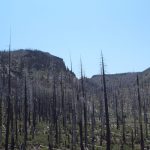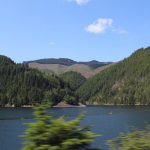June 5, 2018: Forests and Aquatic life
Metolius River
Today we visited the Metolius River, to learn more about how the US Forest service together with other stakeholders are working together to keep the river clean and habitable for aquatic life.
The Metolius River is a tributary of the Deschutes River in Central Oregon:
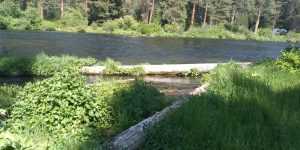
Length: 29 mi
Basin area: 316.6 mi²
Source: Metolius Springs
Basin size: 315 sq mi (820 km2)
Country: United States of America
Mouths: Deschutes River, Lake Billy Chinook
The river’s major threat was stream bank erosion mostly caused by humans during their fishing activities, impacting on the fish populations.
The Metolius River supports a broad cross-section of the wildlife present in the Central Oregon region. The river itself is home to several fish species, including rainbow trout, bull trout, kokanee salmon and mountain whitefish.
Effects of erosion:
- Suspended sediment decreased the penetration of light into the water, impacting on feeding and schooling practices of fish.
- Sediment reduced the amount of light penetrating the water, depriving the plants of light needed for photosynthesis.
- Sediment particles were absorbing warmth from the sun and thus increase water temperature and this was stressing some species of fish.
- Settling sediments were burying and suffocate fish eggs and burying the gravel nests they rest in.
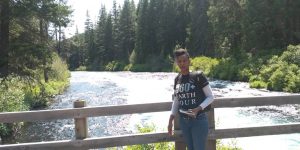
US Forest services and partners used reforestation as the major intervention to reverse the effects of erosion. Trees and other specimen were planted on the river banks along the river channel. Plants now absorb and infiltrate most of the runoff water.
The river has the cleanest river water I have ever seen.
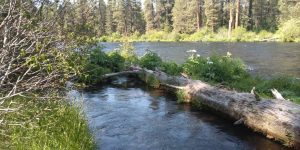
Bringing this home: Most of our rivers are clogged with waste and sediments contributing to dirt rivers. This is mostly caused by activities upstream and along the river bank, such as stream bank agriculture, several trails used by fishermen to access the river and industrial pollution. According to Environmental Management Act, a buffer of 30metres is required from every water source. No human activities are allowed within this buffer, this is done to prevent siltation and chemical deposits into river. However, as the country is getting drier, more community member have put up garden in the middle of rivers or any water source. As a result most river are drying up from over harvesting of water and its affecting aquatic life.
What to do:
- Collaborative effort from all stakeholders in river management.
- Introduction of Community gardens fully furnished with borehole, solar water pumping systems, fenced to ensure gardens move away from rivers.
- Education and awareness on the dangers of stream bank cultivation.
- Planting trees and other specimens along the river bank.
- Empowering Marange’s Youth: Celebrating Africa Environment Day at Holy Ghost High School - March 14, 2024
- Sowing Seeds of Hope: Rejuvenating Chiadzwa’s Environment Through Tree Planting” - March 11, 2024
- 5 Years On. Growing Green: Cultivating a Sustainable Future For Macheke’s Children - March 11, 2024



